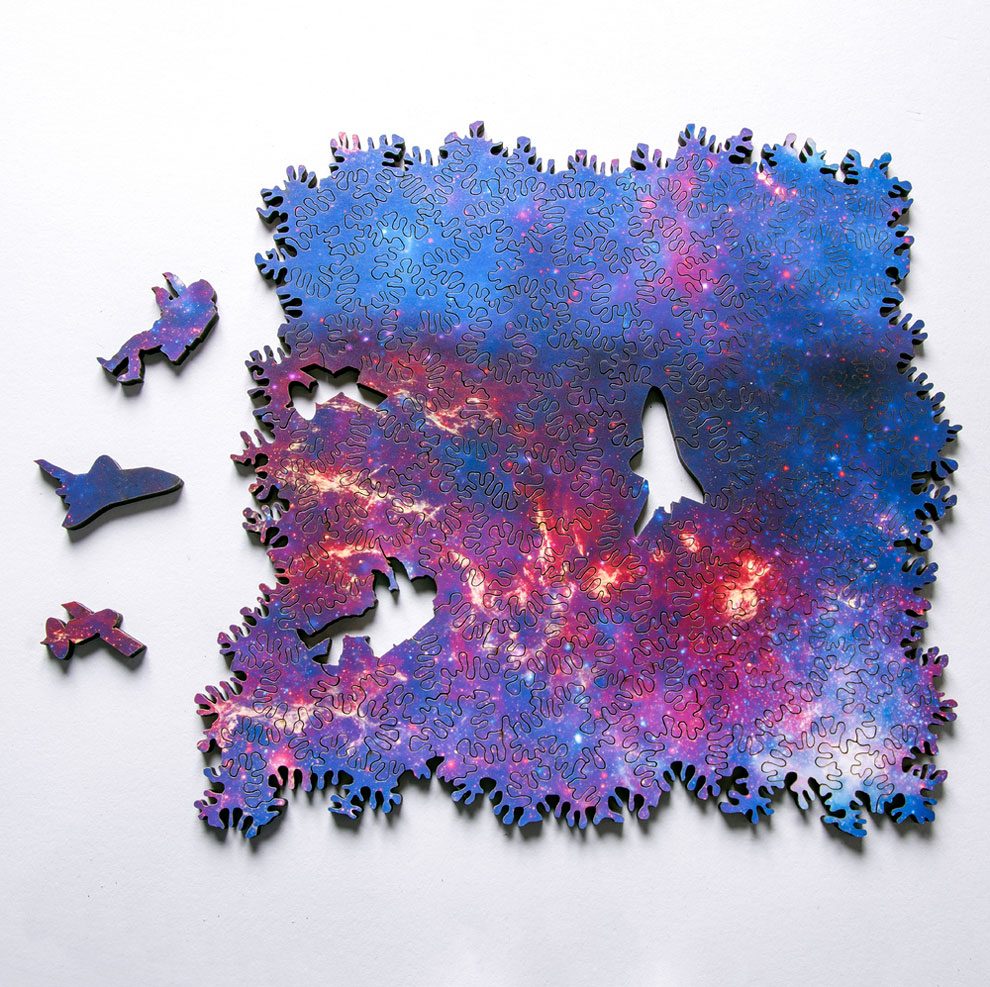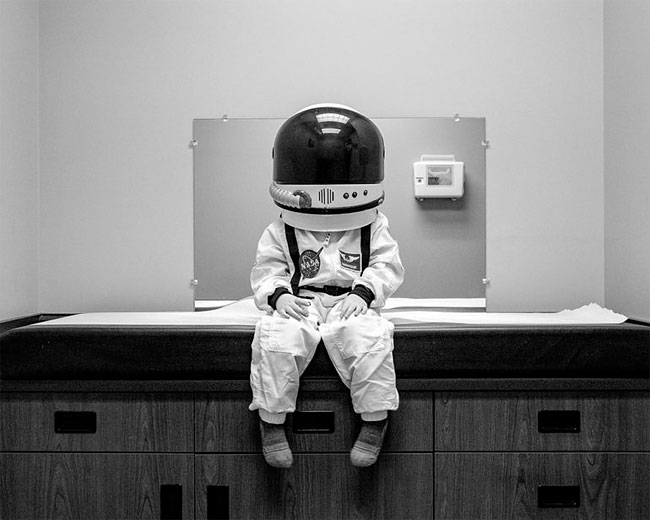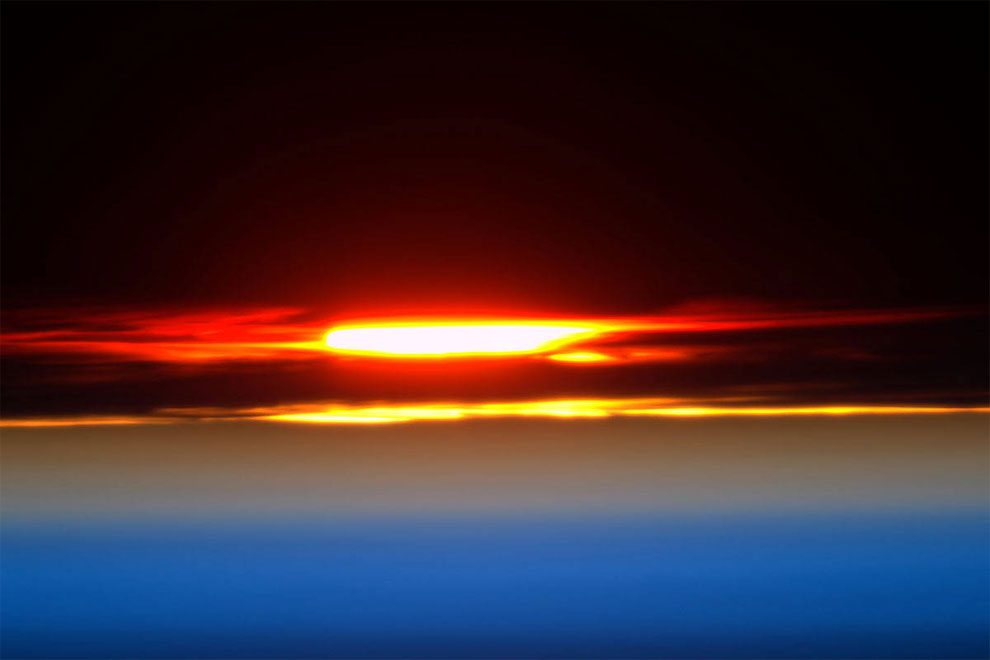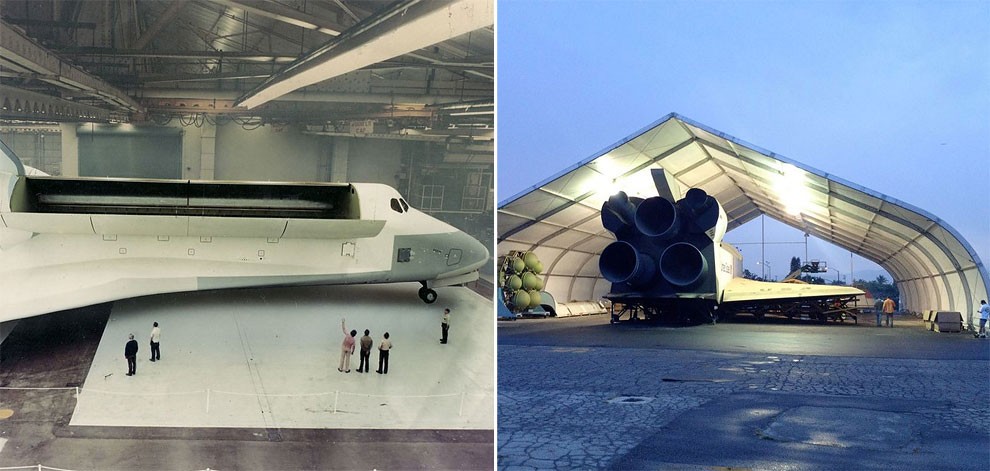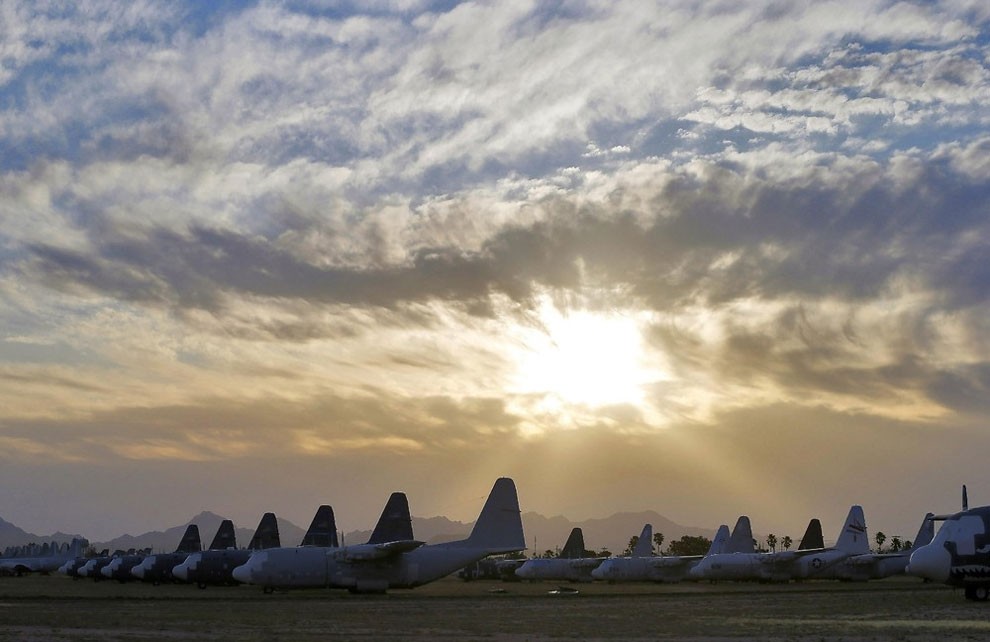An ‘Infinite’ Galaxy Puzzle That Can Be Built In Any Direction
The team over at Nervous System recently designed this fun Infinite Galaxy Puzzle that tiles continuously in any direction. Pieces from the top can be removed and added to the bottom, and likewise from side to side. So regardless of where you start the puzzle can continue in a seemingly infinite series of patterns. Each puzzle is printed with satellite imagery obtained from NASA and includes a few themed pieces like an astronaut, shuttle, and satellite. Apparently the puzzles were wildly popular and are now available as a pre-order for 2017. Continue reading »
This Stellar Dad Photographs His Astronaut Kid Boldly Going Where No Kid Wants To Go
Photographer Aaron Sheldon’s son originally got the idea to dress up like one of these tough rocketeers when he was afraid during a check-up. But Sheldon took his son’s statement and ran with it. The project took on a bigger meaning when he noticed that a kid’s entire life is like a mini mission to Mars: Their universe is totally alien, and everything they encounter is awe-inspiring. Continue reading »
These Breathtaking Photos Of Outer Space Are Probably The Best Photos Captured From The ISS
Astronaut Scott Kelly took these amazing pictures of space during his 520 stay at the International Space Station. NASA released his pictures just recently and you won’t be able to take your eyes of them. Continue reading »
By The Danger In Her Eyes: The Hauntingly Beautiful Portraits By Elena Sai
Elena Sai (Elena Zaitseva) is a talented digital artist from Kiev, Ukraine. In each portrait Elena combines realism with creepy features and makes a breathtaking disturbing masterpiece. Continue reading »
Historic Space Shuttle Mockup Stored in Downey, California
‘Inspiration‘ was built in 1972 by North American Rockwell (now part of Boeing) at the company’s plant in Downey, California. Crafted mainly from wood and plastic, the 122 foot-long by 35 foot-tall model was used to fit-check payloads, instruments and other in-flight hardware that would ultimately be pressed into service on operational orbiters. Continue reading »
Fascinating Satellite Photos of Seaweed Farms in South Korea

NASA’s Goddard Space Flight Center just shared these fascinating satellite photos taken in January 2014 over the shallow waters around Sisan Island, South Korea. The tiny patchwork of small squares are entire fields of seaweed that are held in place with ropes and buoys to keep the plants near the surface during high tide but off the seafloor in low tide. Continue reading »
Man Noticed This Abandoned Hangar But Whats Inside Caught Him By Surprise
Urban explorer and photographer Ralph Mirebs found something very rare; a find unlike anything we’ve seen before. While venturing around Kazakhstan, Ralph came across an enormous abandoned building. At first, the building looked similar to a large airport hangar but much larger. After breaking into it, he realized that this was a very special building with some of the most historical items in the world. In fact, two of the most historical items in the world! Scroll down to see these spectacular images for yourself.
The abandoned hangar is located at the Baikonur Cosmodrome in Kazakhstan. The Cosmodrome is miles away and still in operation today. Because the NASA Space Program was recently shut down, this is the only area that astronauts can make their way up to the International Space Station via Russian Soyuz space shuttles. This hangar in particular is from a previous time when the Russians and the Americans were competing in a race for space exploration. Continue reading »
Winners of the 7th Annual Wikimedia Photo Awards
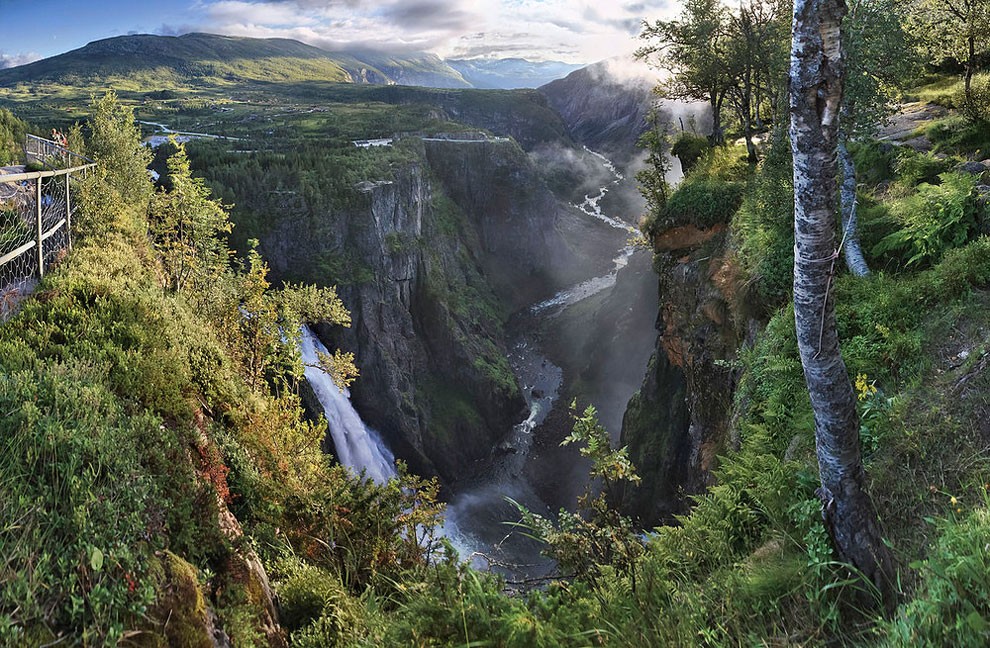
A wide evening view to Måbødalen in Eidfjord municipality, Hordaland, Norway. The view has been captured from the eastern end of the valley. (Photo by Ximonic, Simo Räsänen)
Continue reading »
Arizona Desert “Boneyard” – World’s Largest Storage Site for Old Military Planes
The sun sets over C-130 cargo planes at the 309th Aerospace Maintenance and Regeneration Group boneyard at Davis-Monthan Air Force Base in Tucson, Ariz. on Thursday, May 14, 2015. The 309th is the United States Air Force’s aircraft and missile storage and maintenance facility and provides long and short-term aircraft storage, parts reclamation and disposal. (Photo by Matt York/AP Photo) Continue reading »
Pakistan: the Double Life

This combination of two images taken on Thursday, January 15, 2015, shows Pakistani Riasat Hussain, 19, posing for a picture at a friend’s place in Rawalpindi, Pakistan. Across conservative Pakistan, where Islamic extremists launch near-daily attacks and many follow a strict interpretation of their Muslim faith, male cross-dressers and the transgendered face a challenge of balancing two identities. Some left their villages for the anonymity of a big city, fearing the reactions of their families while still concealing their identity from neighbors and co-workers. (Photo by Muhammed Muheisen/AP Photo)
Continue reading »
Year 2014 from Space

Image of the Clouds taken in August 2014 by astronauts on board the International Space Station (ISS). A year from space photographs of hurricanes, typhoons and meteorite craters show an astronauts-eye view of our planet from hundreds of miles above the earth. The illuminating images were taken by astronauts onboard the International Space Station (ISS) over the course of 2014. The space-based snappers captured everything from phenomenal weather to the Northern Lights from their orbit at around 220 miles above the earth. Astronauts have lived on the ISS every day since October 2000 – and the floating home and science lab provides a unique opportunity to capture out-of-this-world photographs. (Photo by NASA/SPL/Barcroft Media)
Continue reading »
Watching the Partial Solar Eclipse
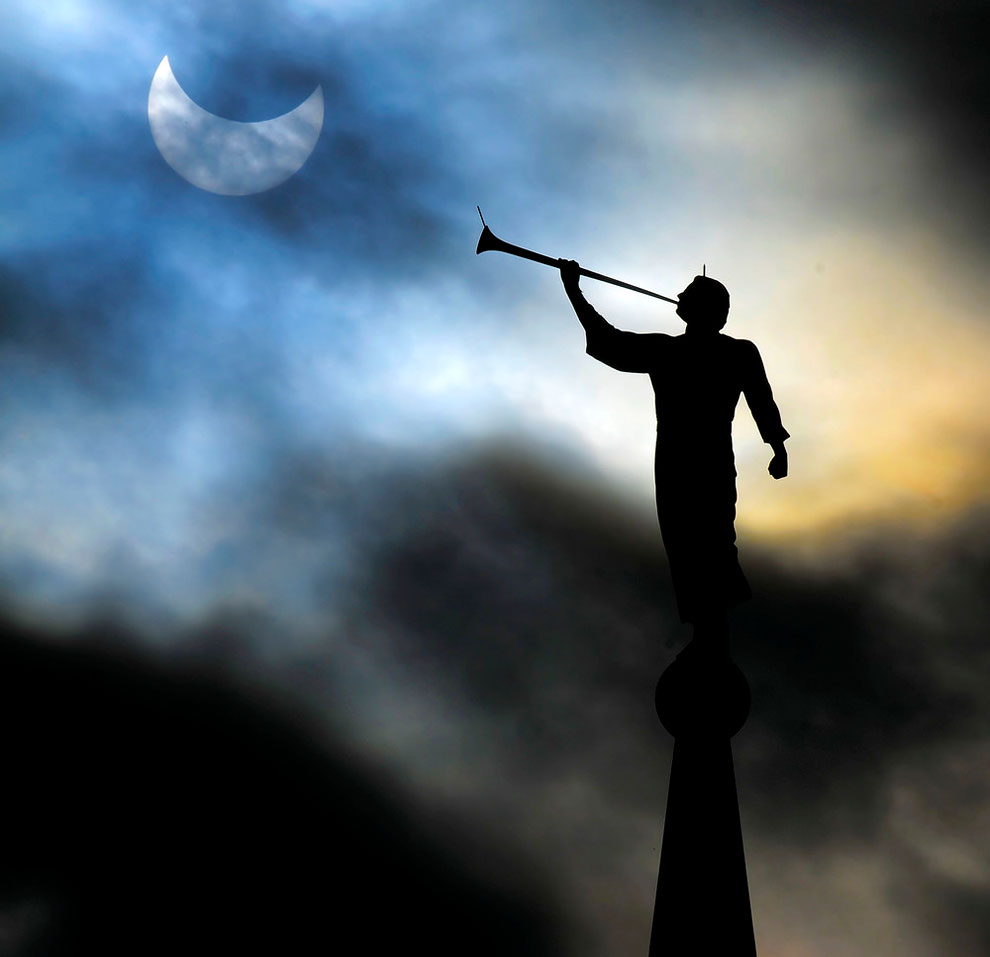
The Angel Moroni statue on the top of The Church of Jesus Christ of Latter-day Saints’ temple in Brigham City, Utah, is silhouetted by a solar eclipse, Thursday, October 23, 2014. (Photo by Eli Lucero/AP Photo/The Herald Journal)
Continue reading »
The Kollie – Cybernetic Organism
Dmitry Izotov’s graphic design project, The Kollie – Cybernetic Organism, is a series of photographs that have been altered to include a steampunk machine similar to something seen in James Cameron’s Avatar. Instead of a human sitting at the helm, though, we have a dog, empowered by its increased size, steel breastplate and claws of death. Continue reading »
Horse in the House – German Woman Lets Horse Live in Her House Following Hurricane Xaver

Doctor Stephanie Arndt brought her horse Nasar into the house when Hurricane Xaver battered her town of Holt, Germany in late 2013. But the three-year-old Arabian horse has taken a liking to the indoors — you could say he’s made himself right at home. You’ll have to see these photos to believe them. (Photo: Carsten Rehder/AFP/Getty Images) Continue reading »
Shots of Earth from Space

Australian desert. (Photo by NASA) Continue reading »
The Time Machine: Halloween Through the Years

Two skeletons dressed for a wedding sit in a garden of the Horn family house in Isernhagen, Germany, on October 28, 2013. The Horn family has been decorating their house for Halloween for more than ten years. (CHRISTIAN DITTRICH/AFP/Getty Images) Continue reading »
Monster Hurricane on Saturn
NASA’s Cassini spacecraft has provided scientists the first close-up, visible-light views of a behemoth hurricane swirling around Saturn’s north pole. In high-resolution pictures and video, scientists see the hurricane’s eye is about 1,250 miles (2,000 kilometers) wide, 20 times larger than the average hurricane eye on Earth. Thin, bright clouds at the outer edge of the hurricane are traveling 330 mph(150 meters per second). The hurricane swirls inside a large, mysterious, six-sided weather pattern known as the hexagon.
“We did a double take when we saw this vortex because it looks so much like a hurricane on Earth”, said Andrew Ingersoll, a Cassini imaging team member at the California Institute of Technology in Pasadena. “But there it is at Saturn, on a much larger scale, and it is somehow getting by on the small amounts of water vapor in Saturn’s hydrogen atmosphere”.
A major difference between the hurricanes is that the one on Saturn is much bigger than its counterparts on Earth and spins surprisingly fast. At Saturn, the wind in the eye wall blows more than four times faster than hurricane-force winds on Earth. Unlike terrestrial hurricanes, which tend to move, the Saturnian hurricane is locked onto the planet’s north pole. On Earth, hurricanes tend to drift northward because of the forces acting on the fast swirls of wind as the planet rotates. The one on Saturn does not drift and is already as far north as it can be.
The north pole of Saturn, in the fresh light of spring, is revealed in this color image from NASA’s Cassini spacecraft. (NASA/JPL-Caltech/SSI) Continue reading »
Less Armchair
This armchair pushes the boundaries of product design. It was born by lots of questions and philosophizing. What is the design or art? What is beautiful and what is ugly? How far we can go? What we call well-designed product? If something is simple , is it beautiful as well? Why? If less is more,a little is much? How does the simplest armchair look like?
When we sit in the Less armchair, the minimal cube design become more by us and by creases. So the less become more and the questions are answered. This is a proof that the less can be more. Designed by Attila Jónás. Continue reading »
Chris Keegan by Cosmic Creatures
Looking up at the sky and forming images from the stars has been going on for just about as long as human life has existed, but that was only what could be seen from the Earth. Digital illustrator Chris Keegan has taken constellations to a whole new level with the use of images from NASA’s Chandra X-ray Observatory. Continue reading »
The Model of James Webb Space Telescope
A full scale model of the James Webb Space telescope is displayed at the South by Southwest Interactive Festival in Austin, Texas. As big as a tennis court and as tall as a four-storey building, the James Webb Space Telescope is the successor to the Hubble telescope and the largest space telescope ever built. (EPA/NASA/Chris Gunn)
Thriving since 1960, my garden in a bottle: Seedling sealed in its own ecosystem and watered just once in 53 years
David Latimer first planted his bottle garden in 1960 and last watered it in 1972 before tightly sealing it shut ‘as an experiment’. The hardy spiderworts plant inside has grown to fill the 10-gallon container by surviving entirely on recycled air, nutrients and water.
For the last 40 years it has been completely sealed from the outside world. But the indoor variety of spiderworts (or Tradescantia, to give the plant species its scientific Latin name) within has thrived, filling its globular bottle home with healthy foliage. Yesterday Mr Latimer, 80, said: ‘It’s 6ft from a window so gets a bit of sunlight. It grows towards the light so it gets turned round every so often so it grows evenly. ‘Otherwise, it’s the definition of low-maintenance. I’ve never pruned it, it just seems to have grown to the limits of the bottle.’
The bottle garden has created its own miniature ecosystem. Despite being cut off from the outside world, because it is still absorbing light it can photosynthesise, the process by which plants convert sunlight into the energy they need to grow. Continue reading »
‘Stacked’ Space Station Photos Highlight Star Trails
A scientist aboard the International Space Station took extraordinary photos of the starscape from aboard the vessel, using a special technique that highlights their movement. Expedition 31 Flight Engineer Don Pettit used long exposures in conjunction with digital editing to achieve the star-trail effect. Given that some of the shots required nearly 15 minutes of exposure, Pettit needed the software to overcome the limitations of his camera. Continue reading »
Photo of the Day: The Aurora Australis from Space
This image released by NASA shows the Aurora Australis, accompanied by star streaks and air glow, recorded by one of the Expedition 31 crew members May 22, 2012 when the orbital outpost was above a point on Earth located about 290 miles southeast of southern New Zealand. Two Russian spacecraft docked to the station are seen in the foreground. (NASA) Click image to zoom.
Photo of the Day: Fantastic Lava Flows on Mars
This image provided by NASA shows lava flows in the shape of coils located near the equatorial region of Mars. Analyzing high-resolution images of the region, researchers have determined the area was sculpted by volcanic activity in the recent geologic past. This is the first time such geologic features have been discovered outside of Earth. (NASA) Click image to zoom.
Satellite Eye on Earth: March 2012
The Paraná River floodplain along the Mato Grosso-São Paulo border, Brazil. The river appears as a wide, blue strip with the muddy brown water of the smaller Verde River entering from the north-west (top left). An extensive wetland (dark green) and the floodplain reaches a width of 11 kilometres (about 7 miles). The thin line of a road crossing the floodplain also gives a sense of scale. The floodplains are bordered by numerous rectangular agricultural fields, containing coffee, corn, and cotton crops. (ISS/NASA) Continue reading »
